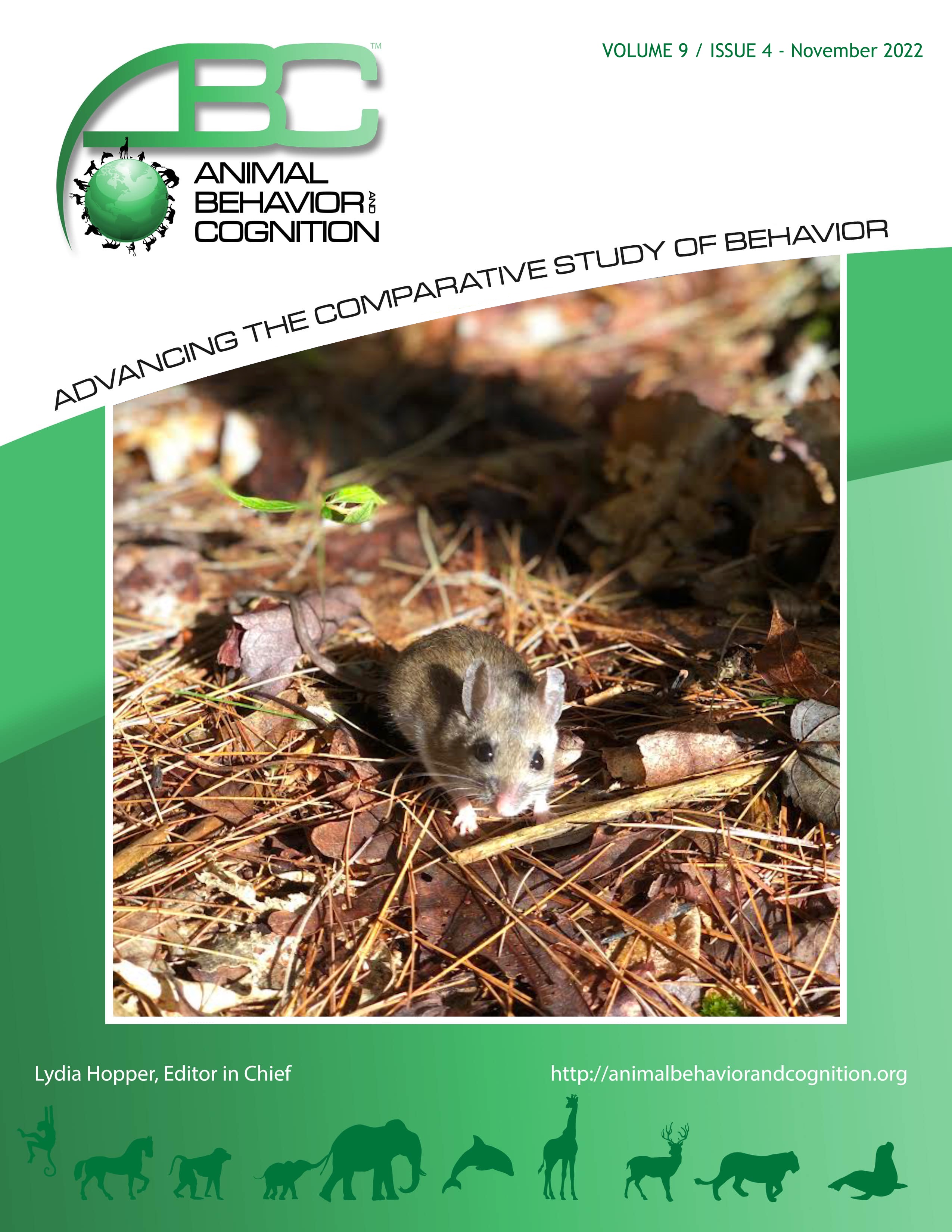Vol 9, Issue 4, November 2022
Painted Turtles Solve a Detour Task Using Proximal Cues
Citation
Kochen, W., Gomerez, J., & Powers, A. S. (2022). Painted turtles solve a detour task using proximal cues. Animal Behavior and Cognition, 9(4), 408-415. https://doi.org/10.26451/abc.09.04.04.2022
Abstract
Painted turtles (Chrysemys picta) are a common species of pond turtle, which forage for food in shallow water and on land, necessitating navigation around obstacles. A detour problem in the laboratory is one in which an animal is presented with a goal on the opposite side of a barrier, so that the only way the individual can reach the goal is to navigate around the barrier. As such, the detour problem presents a challenge for animals similar to what they find in the wild. They must use their spatial understanding of the environment to navigate around the detour and obtain the food. In this study, we investigated a detour problem in which painted turtles had to find their way around a barrier to obtain food as the reward. We then tested them on their use of intra-apparatus (proximal) and extra-apparatus (distal or room) cues. All turtles solved the problem on the first trial, and almost all of them did so consistently over days. They did not show improvement in speed over trials, and they went to different sides on different days, suggesting that they were not learning the task but were solving it anew each day. When the apparatus was rotated in the room, their behavior did not change, showing that they were using proximal, not distal, cues to navigate the detour. These findings demonstrate that painted turtles can solve a detour without the need for experience with the contingencies of the task and that they rely on intra-apparatus (proximal) cues to do so. They add to the growing body of findings that demonstrate that non-avian reptiles can master a detour task.
Keywords
Chysemys picta, Detour, Spatial cue
